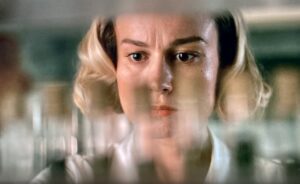The vibrant location of Quebec City, capital of the Quebec province, is the center hub of French-Canadian culture with a population of roughly 0.5 million. Located alongside the St. Lawrence River, the city showcases its European charm in spades with historical sites and landmarks, excellent cuisine and other experiences well worth the trip.
Founded in 1608, Quebec City is notable as not only one of the oldest cities in Canada but also one of the earliest cities of North America. Remnants of the city’s long and vast history can be seen at the city wall, known as the ramparts of Quebec City, which is located in the northern neighborhood of Old Quebec.
While defensive fortifications date back to the city’s origin, the first real wall finished completion in 1690. Various modifications have been made to the city wall since then while the city was under British control. When the British relinquished control in 1871, many parts of the wall were demolished in order to allow for new developments for citizens’ benefit. By the late 1940s, the ramparts of Quebec City were officially documented as a national historic site.
The southern section of the ramparts connects to the Citadel of Quebec, otherwise known as La Citadelle. It primarily functions as an active military installation for the Canadian Armed Forces. The Citadel of Quebec also serves as residence for the governor general of Canada as well as Canada’s monarch. It is tradition to fire off a cannon from the fort every day at noon, which can be heard across the city. Located alongside the Cap Diamant, visitors can walk alongside the outer rim on designated paths.
If you need another place in the city to take a stroll, then the Plains of Abraham is a perfect location to do so. The park, which is hundreds of acres in size, was originally the site of the Battle of the Plains of Abraham in September 1759, but the fields are now used for grazing.
Quebec City is also home to other historical sites with European influences. The first is the Notre-dame de Quebec Basilica Cathedral.Constructed in 1647, it is notable as the first Catholic cathedral in North America. Those who visit during the summer will be able to descend into the crypt: the burial ground for many leading officials and Catholic bishops. Winter visitors will still be able to admire the golden baldacchino as well as the cathedral’s Holy Door.
Another famous church to visit is the Cathedral of the Holy Trinity, which was first constructed in the early 19th century during British rule. It houses many vibrantly colored British-made glass windows and is notable as the first Anglican cathedral constructed outside the British Isles.
For weekend stays, there are many hotel options. One of the most iconic places to stay in Quebec City is known as the Fairmont Le Chateau Frontenac. Guests have the selection of over 600 guestrooms and suites at this urban resort, and are greeted with a pristine view of the St. Lawrence River. The Chateau Frontenac also has various dining and bar options for guests, such as the Bistro le Sam and the Champlain Restaurant.
The city has a variety of appetizing dining locations. One highly recommended place is Les Trois Garçons, located on Rue Saint Jean. This place offers a selection of wine and cocktails and includes a more family-friendly menu of gourmet salads, poutine and some of the best charbroiled burgers in the area. Combined with a relaxing atmosphere, the restaurant gives off a New York-inspired feel that customers of any age will enjoy.
Other recommended restaurants include the Sous de Fort and its delectable offerings of grilled meats, sandwiches and fish dishes alongside exquisite homemade desserts. If going out for drinks is more up your alley, then Pub St. Patrick is worth the visit for their offering of Guinness drinks.
Families will also find enjoyment when they visit the Quebec Aquarium, located in the Sainte-Foy neighborhood south of the city. The aquarium offers more than 10,000 different animals from over 300 species. In particular, the indoor jellyfish exhibit is quite a sight to behold. The visit is absolutely worth it if you’re an arctic animal lover, as the exhibits include walruses, polar bears, sea lions and many more.
If you decide to visit the city during early February, then you must check out the Quebec Winter Carnival. Held this year from Feb. 3 to 12, it is the largest and oldest winter carnival in the world. Thousands of tourists flock to participate in the many outdoor activities and to observe the magnificent ice sculptures. The festival’s mascot, Bonhomme Carnaval, has a dedicated ice palace for guests to walk through, along with other ice constructs such as the inner tube slide and the Ungava ice bar, with the evening packed with musical performances.
Quebec City is a beautifully charming city rich with a historical European atmosphere that is worth a weekend visit at any point of the year. The flexibility and variety of activities for tourists is what makes the city a favorite for travelers all around the Northeast.











